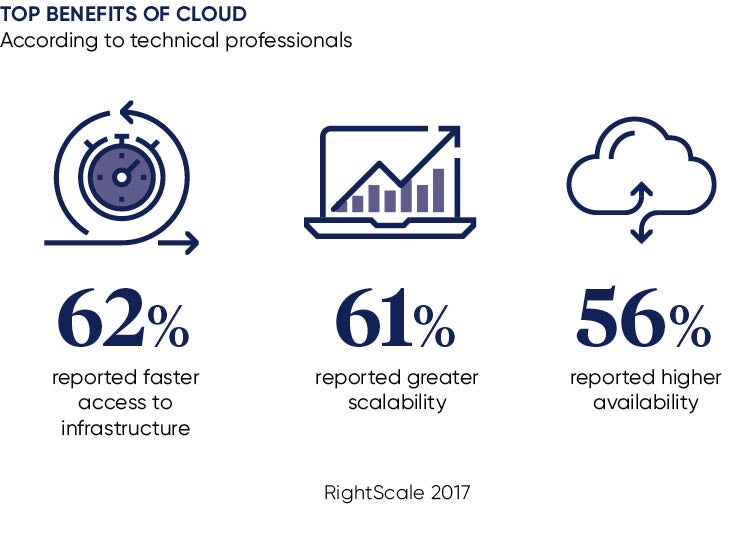In the first phases of cloud adoption, played out over the last five to ten years, IT departments enjoyed cheaper computing and storage capabilities and better agility. These phases are still significant in their own right, but critically they have laid the foundations for cloud’s next phase as a fundamental enabler of higher value services, such as artificial intelligence (AI), blockchain and the internet of things.
Organisations are under pressure to transform and innovate at the same pace of industry disruption. To achieve this, businesses need the flexibility and freedom to exploit services from multiple clouds, and to be equipped to deliver competitive, innovative and elastic apps which they can easily integrate across the business.

High street bank RBS, for example, developed an artificially intelligent chatbot to reduce the load on live agents and soon found that computing-intensive workloads such as AI are best suited to the public cloud. Its use of cloud and cognitive technologies provided the speed and agility required to develop the chatbot in just over two months.
“Typically, we are seeing 30 to 40 per cent of a business’s workloads on the public cloud, but this is on the rise with the growth of cloud-native applications, which are most tightly associated with digital transformation,” says Andrew Wilcock, UK vice president of cloud at IBM. “Clients are shifting to these applications and harnessing the capabilities available on the public cloud, surrounded by agile methodologies that fuel the customer experience.
“By designing a cloud for data and AI capabilities, organisations can better gain insight into existing and third-party info, and therefore gain competitive advantage. It’s for that reason organisations are on multiple phases of their cloud journey through a mix of public, private and hybrid-cloud environments.”
Cloud computing has evolved to become a natural part of how any business thinks. Previously it was sufficient to think of cloud technology as just an element of IT, but now it’s a priority and supports nearly every aspect of a business.
Highest level of disruption
A report by analyst firm Gartner says cloud computing is approaching the highest level on its disruption scale and will act as a necessary enabler for future disruptions. It projects the worldwide public-cloud service market grew to $246.8 billion last year.
As a result, awareness of the value that cloud technology provides to a business stretches from entry-level millennials, who see it as an enabler of flexible working, to boardroom director who have witnessed its pivotal role within the world’s most disruptive companies.
“It’s now widely accepted in boardrooms that cloud technology can deliver real transformation for businesses and hugely accelerate their journeys towards desired business outcomes,” says Christian Pedersen, chief product officer for cloud enterprise resource planning at SAP. “It allows businesses to gain far greater insight into their customers’ preferences and habits, ensuring employees can understand what their customers ideally need, when they’ll need it and the best way to deliver it.”
John Abel, a vice president for cloud and technology at software giant Oracle, adds: “Five years ago, only the most progressive companies would have entertained conversations about cloud computing and IT matters in the boardroom. Today, cloud is a regular topic on the agendas of board meetings at companies of all shapes and sizes, and is now seen as a revenue generator and enabler of innovation, rather than a cost to the business.”
Cloud computing is the new normal and it’s becoming a case of evolve or die
Beyond the boardroom, the cloud conversation in businesses has shifted beyond rudimentary discussions about what it is and how to get there. It’s clear that a level of maturity has been achieved, but as the demands and expectations of consumers continue to evolve, companies must innovate at speed to maintain market share.
“It’s important for business leaders to understand that the journey to a successful cloud plan and implementation doesn’t happen overnight,” says Mark Smith, a senior director for Microsoft. “The potential outcome is one that could enable the organisation to do things that would never have been previously possible.”
The promise of digital transformation has transformed the cloud from a service into an opportunity for many businesses. Spending on cloud is set to skyrocket in the next couple of years, with businesses committing more cash to cloud solutions than ever.
“That everyone else is doing something isn’t usually a good enough reason to join in, but cloud computing is the new normal and it’s becoming a case of evolve or die,” says Mark Hill, chief information officer (CIO) at Nigel Frank International, a global recruitment firm based in Newcastle upon Tyne.
“Business leaders were for some time held to ransom by IT departments. Those days are long gone and every credible CIO knows if they are to be successful, they must be reactive to rapidly changing business needs. The only way to do this is with the cloud.”
Mature but evolving
While cloud computing is indeed a mature technology, it’s still an evolving one as new trends emerge and usage patterns change, such as the growth in platform-as-a-service or PaaS cloud adoption, which indicates massive development in the cloud life cycle.
A few years ago, businesses adopting a cloud-first strategy often found the hype didn’t reflect reality and experienced a lack of true functionality, integration challenges and undetermined security. While many of these issues are being addressed, Mr Hill says new challenges have emerged in terms of cloud cost management, cloud sprawl within the business, changing data privacy laws and a large shortage of quality cloud skills.
Regardless, the cloud is here to stay. It’s growing by the second across businesses of all sizes and has become an absolute necessity, not only for companies to remain competitive, but as a precursor to the next wave of disruptive innovations.

